This post may contain affiliate links. Please read our disclosure policy.

How to Cut a Mango with this easy, no-fail method with step-by-step images and simple detailed instructions. Cut your mango into cubes or strips and enjoy it as a healthy snack or in your favorite curries, salsas, smoothies, and more!
Mangoes are a sweet and juicy drupe, or stone fruit, native to South Asia (India, specifically).
Deliciously sweet (approximately 14% sugar by weight), enjoy this juicy tropical fruit tossed in salads and fruit-filled salsas, mixed into smoothies or smoothie bowls, or as a simple snack.
There is more than one way to peel and cut a mango. Some people prefer a scooping approach. A method that requires cutting the mango into two large pieces, slicing the flesh into small cubes with the skin still on, then scooping out the flesh using a spoon or knife.
This is the method I see people recommend most often and the method I like the least. It may appear easier at first, but it’s more challenging to get a clean slice. The result is lost mango flesh – not ideal.
To avoid losing any unnecessary mango flesh, I always recommend peeling the mango first, before slicing.
Let’s get started.

How Can I Tell If a Mango is Ripe?
The best way to judge whether a mango is ripe or not is by touch and feel, not color.
Gently squeeze your mango. It should give just slightly (similar to picking an avocado). Rock hard? Not ripe. Too much squish? The mango flesh is mushy and will be more difficult to cut.
Remember, the red color is not an indicator of ripeness, nor is the amount of green an indication that it’s not ripe at all.


How to Cut a Mango
1. Prep your mangoes and peel
Wash your mangoes and dry thoroughly.
Place the mango on its side on a large cutting board. Secure the mango with one hand and using a large, sharp knife to slice off one end. You may either cut off the stem end or base end of the mango (or both).
The purpose is to create a flat, sturdy surface to rest your mango when peeling and slicing.
Next, place the mango upright on the cutting board. Hold the mango in place with one hand and use a small paring knife or vegetable peeler to carefully cut away the outer skin, slicing down from top to bottom.


2. Cut just beyond the pit
Inside of every mango, you’ll find a flat, oblong pit. You won’t be able to see it, so you will need to guess the best “incision” point. If you find that your knife is obstructed by the pit, simply move the knife outward, just slightly, or until you can cut from the top of your mango, down and along the side of the pit. Repeat on the other side of the mango, with the other mango cheek.
Cut any flesh from the remaining two (much) smaller sides.
Discard the pit, or eat around it for an easy and delicious sweet snack.

3. Slice and chop
Place the mango sides (“cheeks”) flat-side-down on your cutting board. Use a sharp knife to carefully cut into strips or cubes. The size and shape are entirely up to you.
4. Serve and store
Transfer the diced mango pieces to a serving bowl or large storage container with a tight-fitting lid. Keep leftovers stored in the refrigerator until ready to enjoy – within 5 days.

Nutritional Benefits of Mangoes
Mangoes, or Mangifera indica L., are sweet and irresistibly delicious, but are there any nutritional benefits to eating them?
Per 1 cup (165 grams) of sliced or chopped mango cubes (source)
- Calories: 99
- Protein: 1.4 grams
- Carbs: 24.7 grams
- Fat: 0.6 grams
- Sugar: 22.5 grams
- Dietary fiber: 2.6 grams
- Vitamin C: 67% of the Reference Daily Intake (RDI)
- Copper: 20% of the RDI
- Folate: 18% of the RDI
- Vitamin B6: 11.6% of the RDI
- Vitamin A: 10% of the RDI
- Vitamin E: 9.7% of the RDI
Mangoes are an incredibly rich source of Vitamin C, which helps boost immunity and iron absorption. They’re also full of folate, several B vitamins, as well as vitamins A, K, and E – all immunity boosters.
Despite its impressive nutritional makeup, keep in mind that mangoes are high in sugar – much higher when compared to other fruits. Enjoy in moderation as a sweet snack or as part of a larger meal.
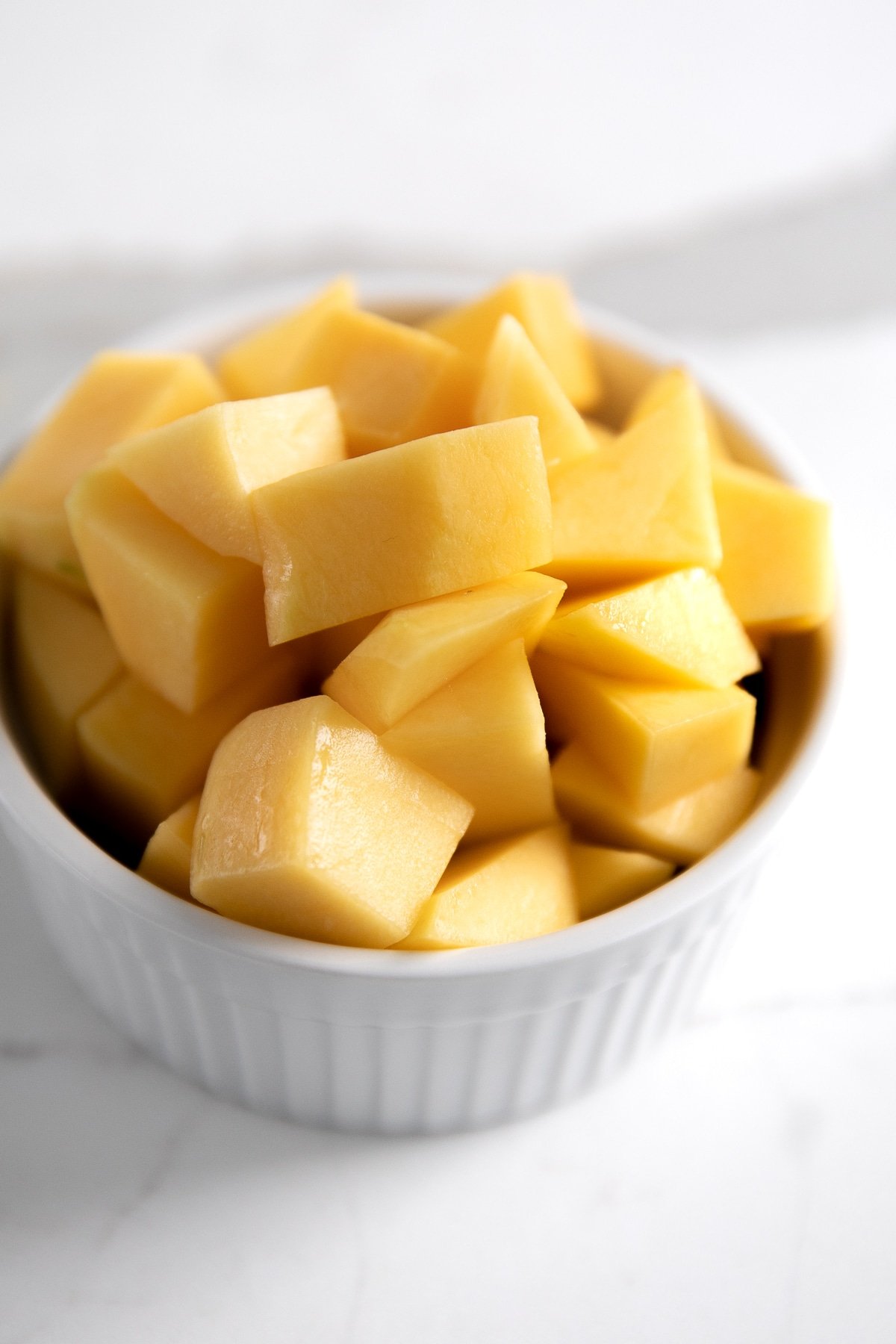
Mango Recipes You’ll Love:
- Mango Avocado Salad
- Mango, Watermelon and Corn Salad
- Thai Mango Sticky Rice
- Acai Bowl Recipe
- Mango Salsa
- Green Smoothie Recipe
Have you learned how to cut mangoes, yet?
Tell me about it in the comments below! I always love to hear your thoughts. And tag me #theforkedspoon on Instagram if you’ve made any of my recipes, I always love to see what you’re cooking in the kitchen.

How to Cut a Mango Recipe
Instructions
- Choose a ripe mango – Judge a mango's ripeness based on touch and feel, not color. Gently squeeze your mango. It should give just slightly (similar to picking an avocado). Rock hard? Not ripe. Too much squish? The mango flesh with be mushy and more difficult to cut.
- Cut off one end – You may either cut off the stem end or base end of the mango (or both). The idea is to create a flat surface to rest your mango when peeling and slicing.
- Peel the skin – Use a small paring knife or vegetable peeler to carefully cut away the mango skin. It's easy to accidentally cut into the flesh of the mango, so take your time and to leave as much mango flesh behind as possible.
- Slice off the sides – Inside every mango, you'll find a flat, oblong pit. You won't be able to see it, so you will need to guess the best "incision" point. If you find that your knife is obstructed by the pit, move the knife just slightly until you can cut from the top of your mango, down and along one side of the pit. Repeat on the other side of the mango, with the other mango cheek. Cut any flesh from the remaining two (much) smaller sides.Discard or eat around the pit for an easy and delicious sweet snack.
- Slice or chop – Place the larger mango sides ("cheeks") flat-side-down on your cutting board. Use a sharp knife to cut into strips or cubes.
- Serve and store – Transfer to a serving bowl or large storage container with a tight-fitting lid. Keep leftovers stored in the refrigerator until ready to enjoy – up to 5 days.
Notes
Nutrition
Nutrition information is automatically calculated, so should only be used as an approximation.


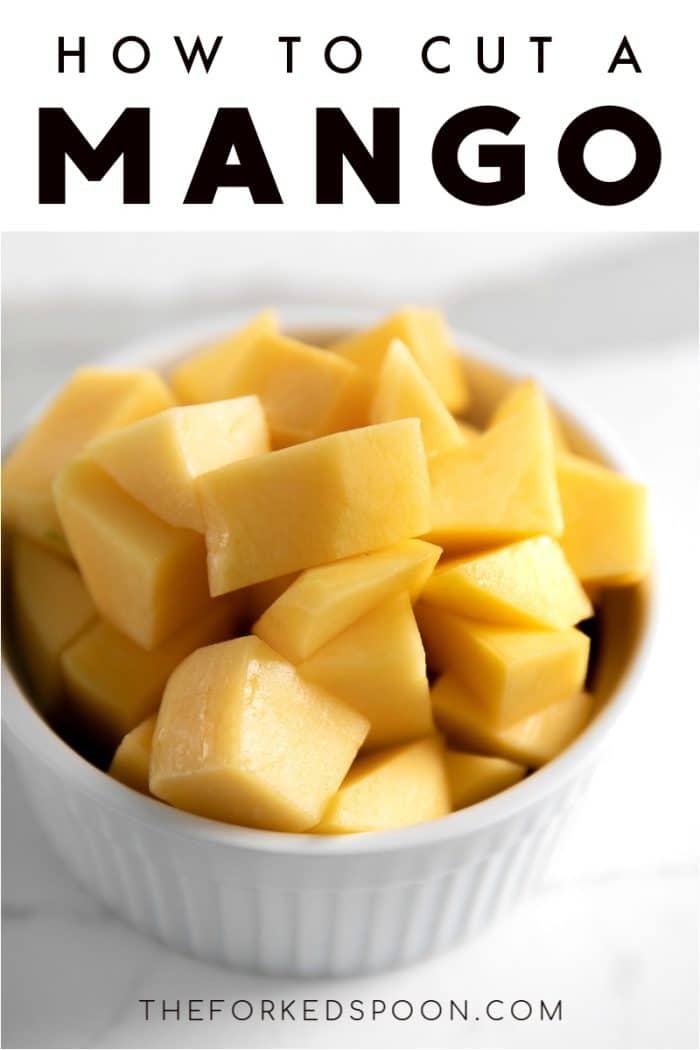

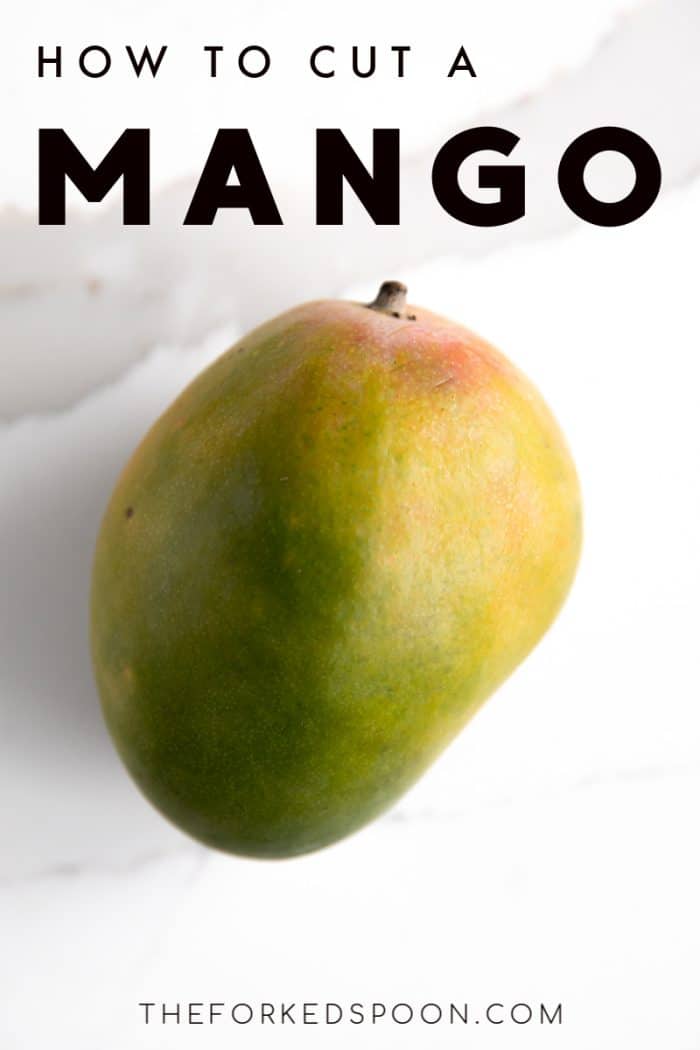



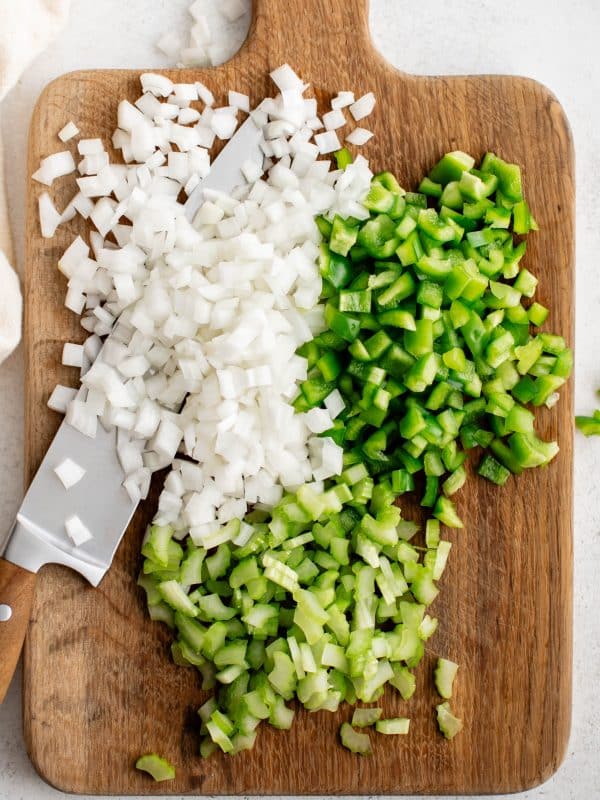
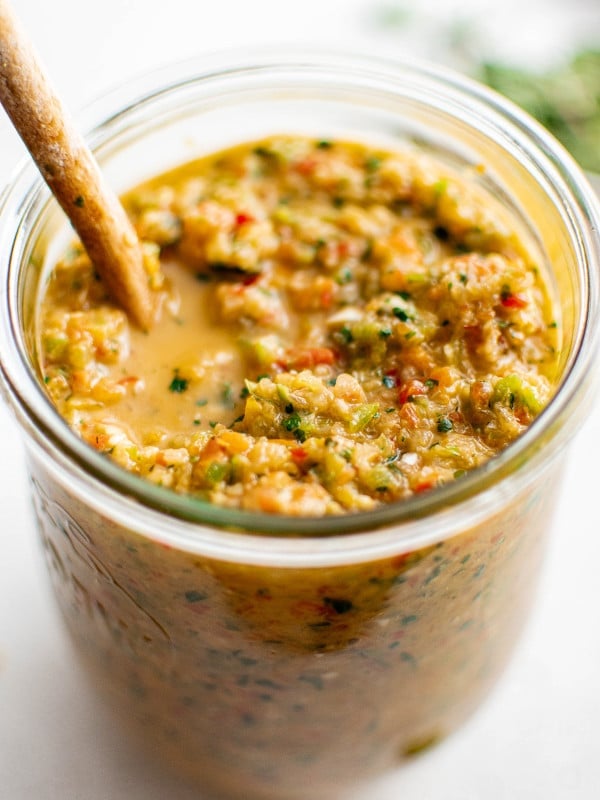










So glad to read that I cut my mangos exactly the same way you do. Very very easy. Since mangoes are in exceptional abundance right now in Florida, I usually can get 7 large mangoes for $5:this time of year. I just love to cut one up in the midday heat for a quick and nutritious snack.